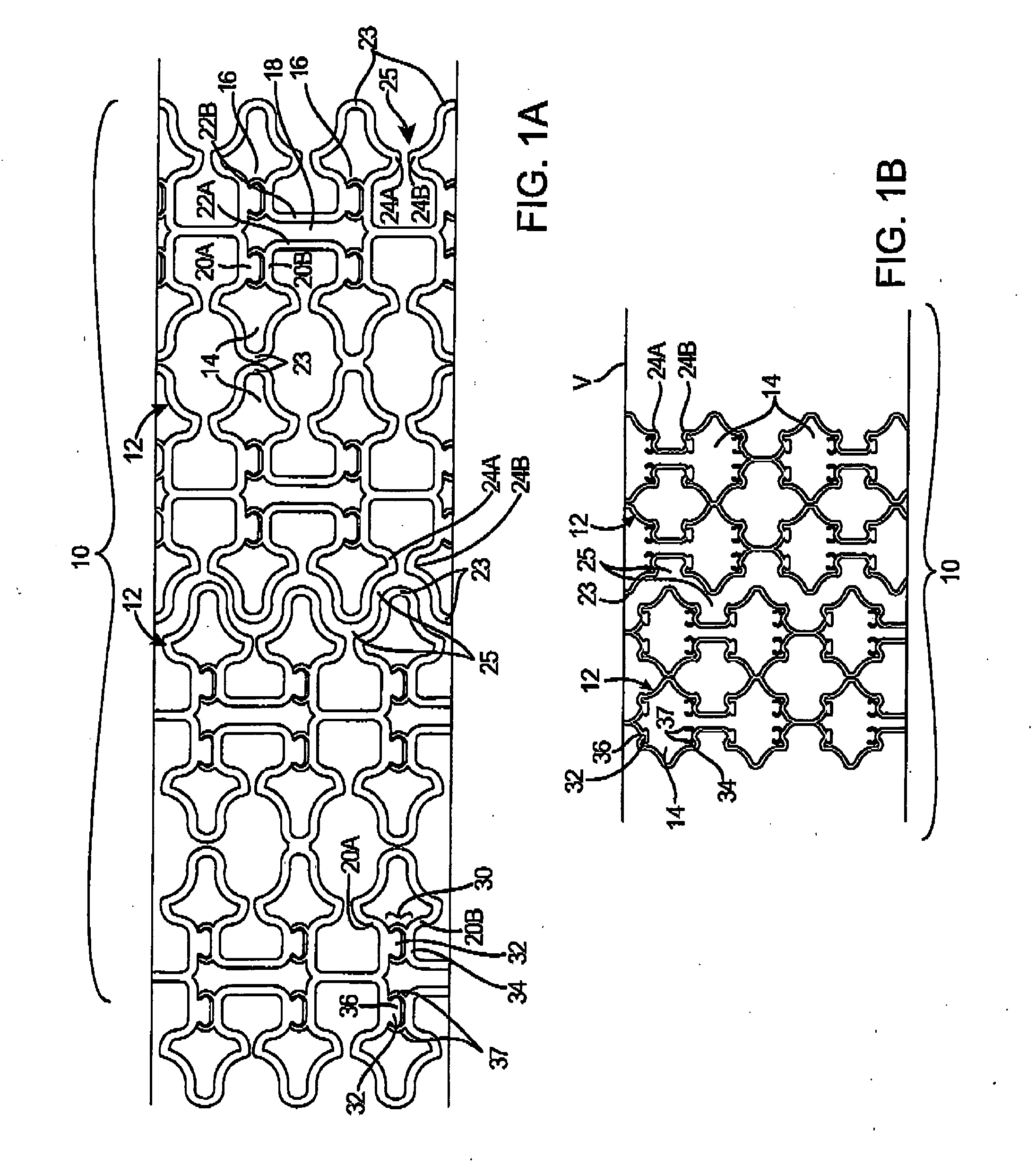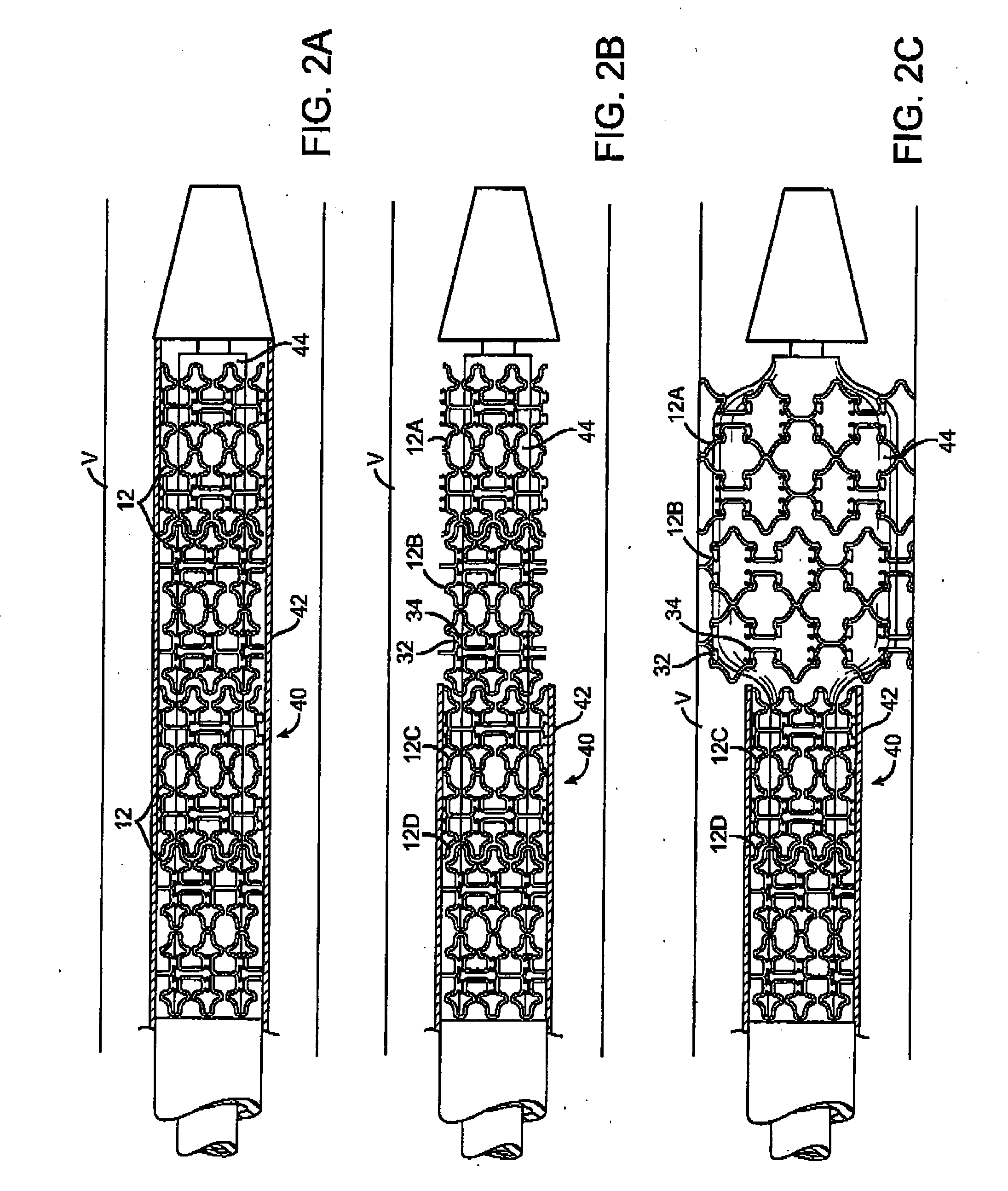Self-constrained segmented stents and methods for their deployment
a segmented stent and self-expanding technology, applied in the field of stents, can solve the problems of uncontrollable recoil of stents, high bending and torsional stress of stents, and difficulty in stent deployment, so as to achieve optimal stent position, optimal stent position, and relative rotational position of segments
- Summary
- Abstract
- Description
- Claims
- Application Information
AI Technical Summary
Benefits of technology
Problems solved by technology
Method used
Image
Examples
Embodiment Construction
[0042] Reference is now made to FIGS. 1A-B, which show a stent 10 according to the invention in a collapsed configuration for delivery (FIG. 1A), and in an expanded configuration in a body lumen V (FIG. 1B). In this embodiment, a stent 10 comprises a plurality of tubular segments 12 that are laser cut from a metal tube into a desired geometry. While a number of preferred stent constructions are described herein, it should be understood that the principles of the invention are applicable to stents of various geometries, materials, and dimensions. Segments 12 may be formed of wire, ribbon, or mesh, cut or etched from a sheet or tube, or molded or woven from polymer, metal, or textile strands, and may be made of various metals, polymers, ceramics, textiles, proteins, or other biocompatible materials. Stent 10 may consist of up to 20 or more segments 12, each being 2-30 mm in length, having a combined length as long as 200 mm or more. In a preferred embodiment, stent 10 is self-expandin...
PUM
 Login to View More
Login to View More Abstract
Description
Claims
Application Information
 Login to View More
Login to View More - R&D
- Intellectual Property
- Life Sciences
- Materials
- Tech Scout
- Unparalleled Data Quality
- Higher Quality Content
- 60% Fewer Hallucinations
Browse by: Latest US Patents, China's latest patents, Technical Efficacy Thesaurus, Application Domain, Technology Topic, Popular Technical Reports.
© 2025 PatSnap. All rights reserved.Legal|Privacy policy|Modern Slavery Act Transparency Statement|Sitemap|About US| Contact US: help@patsnap.com



